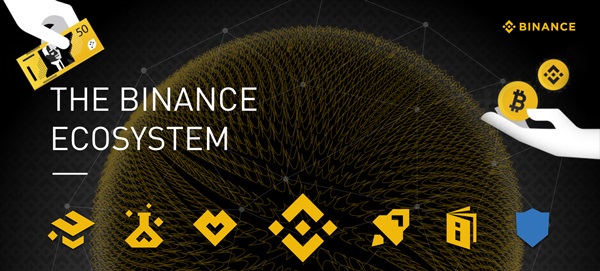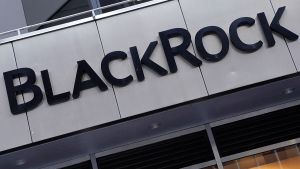Get Ready for Rollups, Bridges, New Apps, Life With Ethereum 2.0, and Layer 3

_____
_____
L2 might become more necessary as crypto and blockchain attract substantial real-world adoption.”Whatever improvements are made on L1 will be massively amplified by L2.”2022 will probably be the year when we know for sure if ZK rollups can become functionally complete, feasible, and competitive.”We’re likely to see a proliferation of bridges between L2s and centralized exchanges emerge, as well as bridges between various L2s.””We will see the rise of native L2 applications, built from the ground up to take advantage of the computational abundance of L2.”Some figures working with L2 also expect the emergence of a new, third layer operating on top of the second.
2022 is estimated to be the year when Ethereum (ETH) — the biggest smart contract-capable blockchain in terms of total value locked in — finally moves to a proof-of-stake (PoS) consensus mechanism. If it’s not delayed again. For some observers, such a transition could mean that layer 2 (L2) solutions built on top of Ethereum, such as Polygon (MATIC), Loopring (LRC), Arbitrum, Optimism, and StarkWare (to name only a few) become more or less redundant, insofar as Ethereum will be able to scale for itself.
However, figures working within the sub-sector all unanimously claim that L2 platforms will not only remain relevant after Ethereum 2.0’s (which is now being rebranded to “consensus layer”) arrival, but will have a strong 2022. Demand for such platforms will grow this year in tandem with the use of Ethereum itself, as smaller transactions and business applications seek the fastest and most cost-effective mechanisms.
At the same time, particular L2 trends might emerge this year, from the growth of zero-knowledge rollups (ZK rollups) and interoperability between platforms to native L2 applications and even the emergence of ‘layer 3.’
Ethereum 2.0 = The end of L2?
Pretty much no one seems to believe that the arrival of Ethereum 2.0 (due at some point in the first half of this year) will make L2 solutions unnecessary. Instead, one of the prevailing trends for this year might be their continuing — and growing — relevance.
“Even if Ethereum 2.0 archives its full scaling potential of offering a 64-fold improvement, it will still likely fall short of expected demand,” said a spokesperson for Polygon.
Crypto is currently in the early stages of the adoption curve, with gaming studios, brands, financial institutions, and Web 2 players just getting started with Web 3. Enterprises are only beginning to explore this space, and for the team at Polygon, the demand is already an order of magnitude more than the expected scaling that will be achieved with Ethereum 2.0.
In other words, L2 will only become more necessary as crypto and blockchain attract substantial real-world adoption.
“The Ethereum main chain will remain the settlement layer, while scaling solutions will emerge as the execution layer for the ecosystem. All the smaller business transactions will run on the scaling solutions and submit cryptographic proofs back to Ethereum,” Polygon’s spokesperson told Cryptonews.com.
As an example, the spokesperson notes that the number of Aave (AAVE) users on Polygon has grown to more than double those on the Ethereum main chain in the last few months. For them, this means “that scaling solutions and higher adoption of the Ethereum ecosystem go hand in hand.”
Other people involved in the L2 space claim much the same thing. According to Matter Labs Chief Marketing Officer, Tyler Perkins, L2 rollups have become an “essential” element in Ethereum’s future and are “here to stay.”
“Although we may have fundamental improvements in base chain scalability over the medium to long term, by that time it’s more likely that layer 2 has become so supported, stable, and secure that it will make little sense for developers or users to move back to layer 1,” he told Cryptonews.com.
Likewise, StarkWare’s Co-founder and CEO, Uri Kolodny, notes that demand for scaling solutions is “skyrocketing,” with his organization witnessing a growth in the use of its StarkEx scaling engine and StarkNet platform.
“The move from proof-of-work to proof-of-stake, a centerpiece of Ethereum 2.0, doesn’t actually help with scalability. Rather, it changes the consensus mechanism for approving blocks. So L2 solutions will remain as relevant as ever,” he told Cryptonews.com.
Kolodny adds that, in a best case scenario where one upgrade or another does make Ethereum itself more scalable, L2 will still have great relevance, by further accentuating scalability.
“Whatever improvements are made on L1 will be massively amplified by L2. If two variables can complement each other to lead to increased efficiency, all the better,” he added.
Zero-knowledge vs. optimistic rollups
Generally, the most popular layer-two scaling solutions involve rollups, which in layperson terms are protocols which execute transactions and then post the resulting transaction data onto a layer 1 blockchain (such as Ethereum).
One particular kind of rollup — known as ZK-rollups — is expected to become more popular as 2022 progresses, although the kind that is dominant right now — known as optimistic rollups — will remain in use for some time.
“We’re ultimately convinced ZK-rollups, and more specifically Volition designs, will be the endgame for Ethereum. That said, we’re likely to see developers fractured between optimistic rollups and ZK-rollups throughout 2022,” said Tyler Perkins.
He notes that general-purpose, ZK-based Ethereum virtual machines (EVMs) such as zkSync are developing far faster than experts predicted, and he’s not alone in heralding zero-knowledge rollups as the future.
“Optimistic rollups will rise in popularity, but there will be a limit to their growth as it is acknowledged the ultimate scale factor they can deliver is limited […] ZK-rollups, or validity rollups to use our preferred phrase, don’t have that limitation and they are the long-term solution,” said Eli Ben-Sasson, Co-founder and President of StarkWare.
According to him, the growth StarkWare saw last year with its solutions was “simply breathtaking,” with the platform settling a total of 85m transactions. It therefore expects to witness significant month-on-month growth this year.
For Polygon, it too expects ZK-rollups to be the dominant technological trend as far as layer-two is concerned this year.
“ZK-rollups, which run on more complex underlying tech but with a more straightforward protocol model, offer interesting benefits to network participants in terms of fast transaction finality. This is why we are in a race to build support for EVM smart contracts on top of a ZK rollup,” said Polygon’s spokesperson.
They add that 2022 will probably be the year when we know for sure if ZK rollups can become functionally complete, feasible, and competitive, with the organization adopting a multi-solution strategy just in case one or the other solution becomes dominant.
Bridges, native applications, layer 3
One key L2 development we’re likely to see in 2022 might be the increasing development of bridges, something which is necessary if solutions want to tap into more liquidity.
“The overwhelming majority of applications on Ethereum today will likely move to L2 over the next 12 months. In addition to these applications, we’re likely to see a proliferation of bridges between L2s and centralized exchanges emerge, as well as bridges between various L2s,” said Tyler Perkins.
Indeed, Polygon also expects bridges and interoperability to become a bigger thing for L2 this year.
“The real utility of [L2] applications can be affected by liquidity fragmentation and the next step will probably have to be an L2 interoperability that enables users to move their assets between networks, avoiding the high fees of L1 withdrawal,” its spokesperson said.
Initially, the projects will be more focused on proving their features, according to Polygon. Interoperability will then come later and will require some coordination.
Another key trend will be the development of apps that actually reside and operate natively on layer-two platforms, so as to more fully benefit from their scaling capabilities.
“We will see the rise of native L2 applications, built from the ground up to take advantage of the computational abundance of L2. We’re at that exciting moment when we know that great things are going to emerge, but we don’t know exactly what — like the moment when the potential of the internet was dawning, but we couldn’t conceive how it would impact the way we organize our lives in such a multitude of ways,” said Uri Kolodny.
This is also something Polygon expects to see happening this year, with its spokesperson predicting that several proofs of concept of existing L1 applications are and will be deployed on L2 solutions.
“The most popular ones are token swap services or AMMs. They have great utility and allow users to compare some properties of the L2 and L1 networks, beyond the transaction fees,” they said.
Lastly, some figures working with L2 also expect the emergence of a new, third layer operating on top of the second, providing crypto with even more scalability. This, at least, is the forecast of Uri Kolodny.
“We recently announced that we are launching L3 — or more accurately multiple L3s — which will quite literally take scaling to the next level. The introduction of L3 will mean that instead of undergoing a single compression before reaching L1, a double compression can take place,” he said.
Kolodny advises us to think of L3 as “a kind of cryptographic version of a Russian doll,” in which the overall system is broken down into and contained with ever-smaller components.
Whether such a third layer will be realized this year is open to debate, but in a world where Ethereum 2.0 (or the “consensus layer”) may potentially steal some of its luster, it shows that the layer-two sub-sector isn’t resting on its laurels.___Learn more: – Crypto Tax Trends in 2022: Increased Reporting, Updated Rules, and a Wealth Tax Debate- Metaverse Trends in 2022: Prepare for More Gaming and New Virtual Experiences with NFTs
– Bitcoin & Crypto Mining in 2022: New Locations, Technologies, and Bigger Players- CBDCs in 2022: New Trials and Competition with Crypto
– NFTs in 2022: From Word of the Year to Mainstream Adoption & New Use Cases- Bitcoin and Ethereum Price Predictions for 2022
– Crypto Adoption in 2022: What to Expect? – 2022 Crypto Regulation Trends: Focus on DeFi, Stablecoins, NFTs, and More
– DeFi Trends in 2022: Growing Interest, Regulation & New Roles for DAOs, DEXes, NFTs, and Gaming- Crypto Security in 2022: Prepare for More DeFi Hacks, Exchange Outages, and Noob Mistakes
– How Global Economy Might Affect Bitcoin, Ethereum, and Crypto in 2022- Crypto Exchanges in 2022: More Services, More Compliance, and Competition
– Crypto Investment Trends in 2022: Brace for More Institutions and Meme Manias
Find more predictions for 2022 here.












